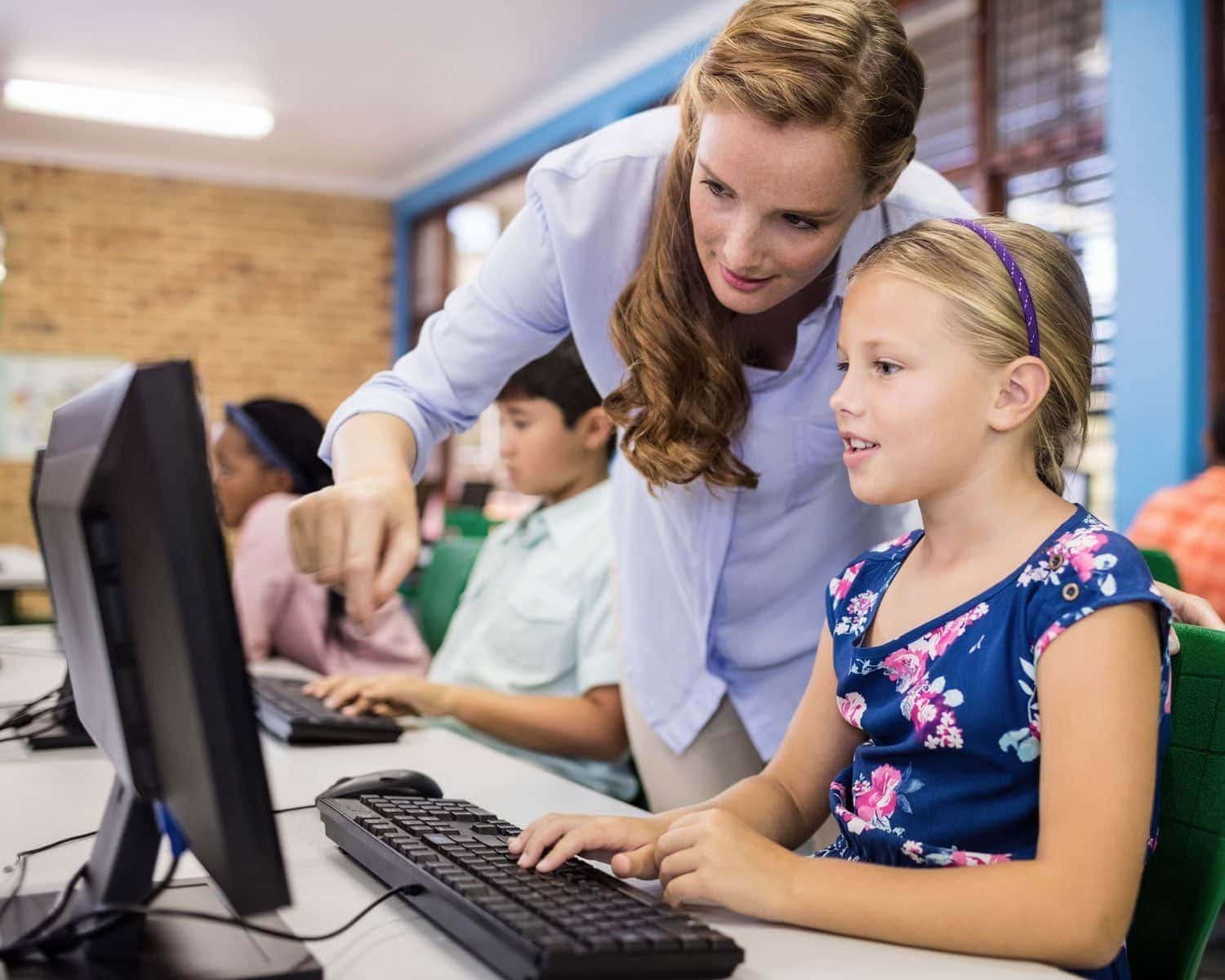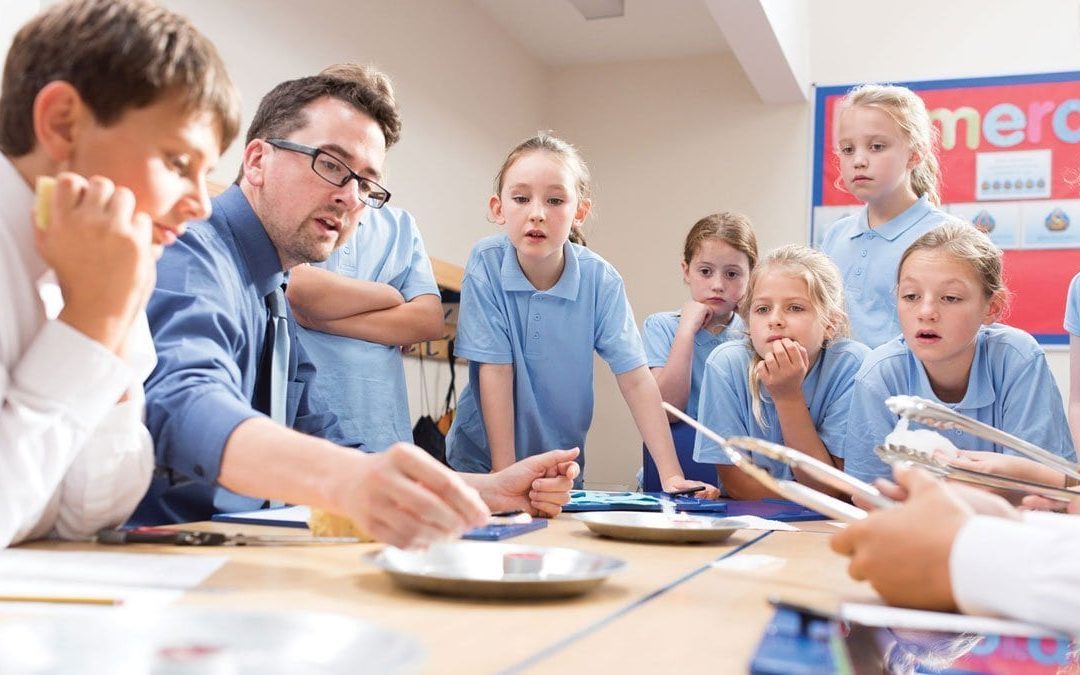Over the summer, educators can take a breath, relax, and reflect on lesson design and implementation over the past year. A time of assessment and of gathering new tools for next year’s teacher toolkit. All while hopefully poolside with a tasty iced beverage.
But where do educators turn for their new and innovative ideas for the classroom? We checked into Education Week’s survey of more than 500 K-12 teachers to find out. Among the statistics were 59% of elementary teachers who identified new ideas from teacher-focused websites. Close behind were junior high schools, at 46%, and high schools at approximately 41%. It seems that nearly half of those surveyed find and share creative ways of teaching from online sources. With this in mind, here are a few big ideas geared towards educators, prompting you to think about your work in a new way.

Revisit your lesson planning strategy. Are you beginning with the objective? Are your learning activities engaging for many types of learners? How will learners demonstrate that they have met the learning objectives that you established? Consider devoting time this summer to planning out a half-year or half-term of lessons in advance.
A rough sketch is all you need. This way, simply returning to these tentative plans and making adjustments according to student progress is less likely to eat up time in the long run, as planning now gives you more free time on the weekends during the school year. And, if you need it, Education World’s got a list of 5-minute activities and lesson fillers if you need to fill in any gaps!
For the brilliant students who finish early. Worried about boredom in your classroom? Give students challenge questions that they can work on as they complete tasks. Students can write down challenge questions in the back of their notebooks as a warm-up before class. Check out this list of science questions that can be adapted for various classes and levels.
Adapt lessons for different learning levels. Offering further instruction benefits both advanced and lower levels, and you can offer extra assignments for concepts taught which cater to both. This strategy can be implemented by having a devoted workstation for those who are either ahead or behind. It can also work in an online format, allowing students access anytime.
Grade in class with students. Did you find that you got bogged down with heaps of grading on your weekends? Primary school teacher Rebecca Pogose of Oxford shares an approach that transformed her workload and had the added bonus of collaborative skill-building in her classes.
She writes, “I recently changed my approach to marking. After a writing exercise in English, for example, I take a group of seven children and I mark with them. We decide together what was great and what could be developed further. The other children do the same in their groups, using codes I’ve given them. The next day, I’ll work with a different group until I’ve made it around the class. I also mix up the children so mixed abilities mark together. The progress and quality of work have been astonishing and my workload has been significantly reduced. Marking is now meaningful, and the children read and respond continuously.”

Know your students’ needs and personalize learning. Many studies support the theory that the majority of students learn more from instruction tailored to their needs. Personalized learning itself is linked to the whole-child teaching approach behind Montessori classrooms. As much as possible, excellent educators do the work of discovering the various needs of their students and set out to create environments designed to fit those needs, and this has the capacity to change lives. At its core, personalized learning is the heart and energy of a well-designed curriculum.
Try giving them options on projects. We all know educating K-12 students can be challenging in the age of attention-grabbing tech. What’s obvious is that teachers need to keep students actively engaged. What’s not so obvious is how we can actually do this. Try giving students an option for project creation. Ask students how they can best prove their learning and let them run with it. A 3D model, a conceptualized board game, a poster or infographic, a slideshow presentation with GIFs, or a good old analog paper can all work to demonstrate mastery of learning objectives while keeping students actively participating.
Homework tips. Definitely a necessity, but worth the once-over with respect to approach. Are you flexible with the due date? Try giving more than a day to complete assignments next year. These days students have soccer practice, a piano lesson, and math tutoring on top of household chores and help with siblings. See if you can get higher numbers of students turning in assignments with this shift.
Find students forgetting homework? This educator created an “Oops I forgot my homework” sheet. “I list the complete day’s assignments on the chalkboard before school begins. When the students arrive, they copy the assignments into their agendas. At the end of the day, we spend a few minutes checking off the assignments we have completed. Any incomplete assignment is circled and becomes homework. I make sure all homework is packed to go home. Parents have been instructed to sign agendas each night, so they will see what work needs to be done.” Students can be held accountable this way and can exercise responsibility for their work.
Whether you work or relax during the summer months, we hope sharing these teaching ideas sparks inspiration and has you looking forward to the next year. And don’t forget the sunscreen.

